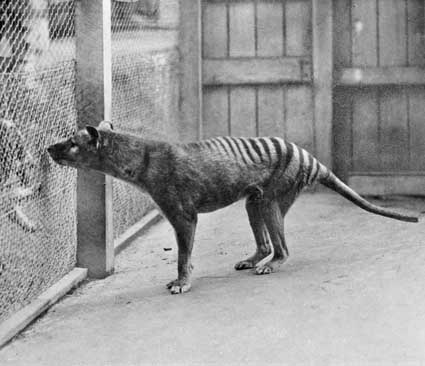"Sometimes it's like looking at ghosts"
People often cry when they see [the specimens] ... You just open [the cabinets] up and start talking and when you look around they’re bawling.
Biology museums in Australia have many specimens of animals that went extinct soon after the invasion of Europeans to the continent. (note that the article contains images of dead mammals in a museum collection).
Hunted under beliefs of livestock-eating, killed by introduced diseases, killed by introduced cats and foxes, rising sea levels from climate change ...
What is the most useful way to grieve the destruction of a species?
Extinction is ... an unravelling of relationships that begins before and continues well after the death of that last individual. Understanding extinction in these terms allows it to be connected to ideas of justice, especially where the loss of a species involves the breakdown of traditional cultural practices or kinship systems. But it also opens up the possibility of thinking about extinction in ways that extend outwards ... The thylacine story isn’t just about the thylacine.
Seeing the species that have been driven extinct, beings that will never live on the planet again --
I thought we’d learned our lesson, and nothing more would be added. But of course that hasn’t been the case.

...
thanks for reading!🪱🦀
Atom feed ; RSS feed
check out my reading list while you're here :)